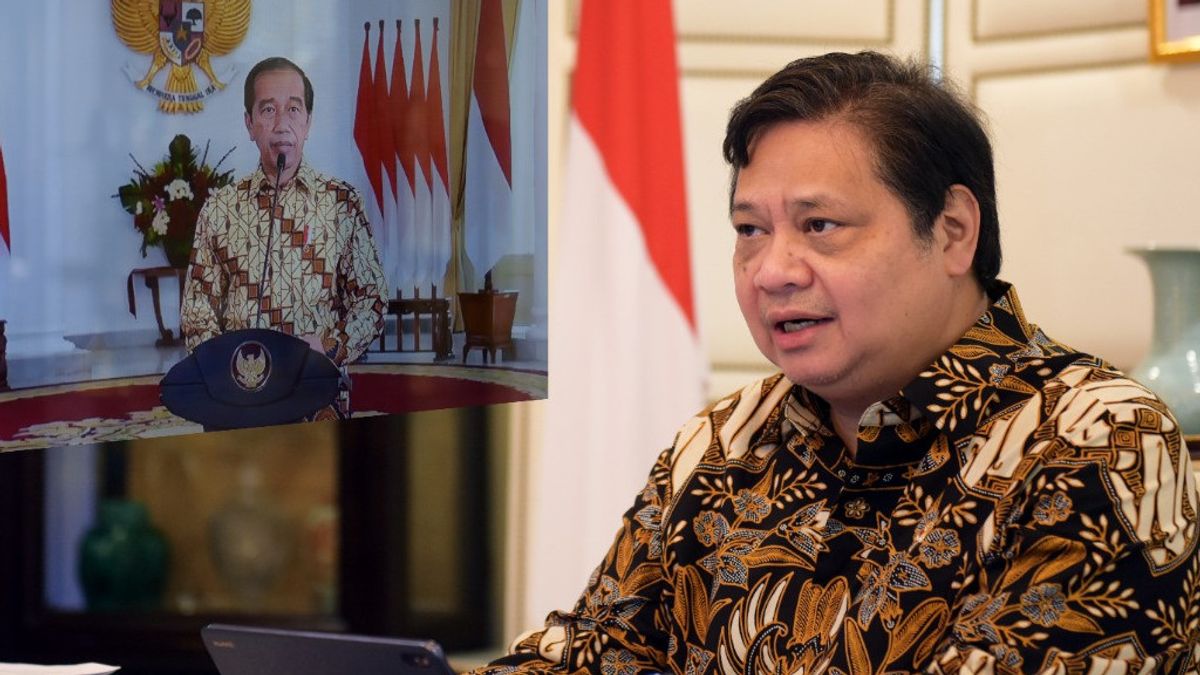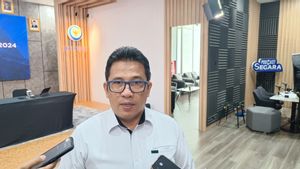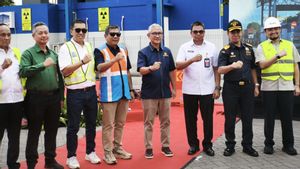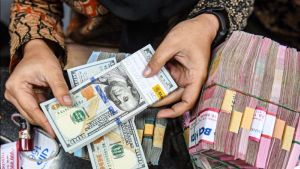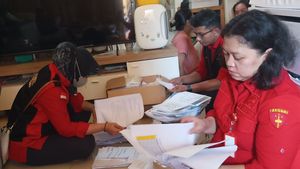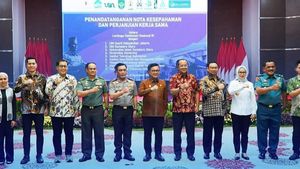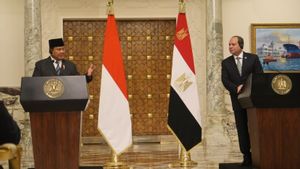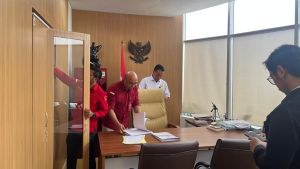JAKARTA - Coordinating Minister for the Economy Airlangga Hartarto said the government had implemented several efforts to deal with the third wave of COVID-19 cases due to the Omicron variant.
A number of policies, he said, including PPKM down to the micro level, the formation of a task force at the village/kelurahan level, strengthening health infrastructure, setting health protocol policies, and other efforts continue to be carried out and continue to be closely monitored.
Then, acceleration of primary and booster vaccinations will also continue to be carried out throughout Indonesia to accelerate pandemic control and to prepare for the pandemic to shift to endemic.
"On this occasion, I would like to express my highest appreciation for the commitment, cooperation, and hard work of the Head of BNPB and all levels, as well as all attendees, who have been focusing on disaster management, both natural and non-natural disasters, as well as in all stages, including pre-disaster mitigation efforts, emergency response during disasters, to rehabilitation and reconstruction as well as post-disaster economic recovery," said Airlangga in an official statement, Wednesday, February 23.
Meanwhile, in the context of accelerating the post-pandemic economic recovery and as a community economic stimulus to increase community resilience and independence, in 2022 a National Economic Recovery Budget (PEN) of Rp455.62 trillion has been allocated for handling the pandemic in the health sector, protecting the community, and strengthening economic recovery. .
The government also encourages front loading of state spending including PEN funds in early 2022 and is aimed at boosting economic growth in Q1-2022, including alleviating extreme poverty. For this reason, the acceleration of the disbursement of social welfare policies starting in February, including PKH, basic necessities, village BLT, Pre-Employment Cards, as well as PKL & Warung Cash Assistance (BT-PKLW) which was extended to fishermen in 212 priority districts/cities for alleviating extreme poverty.
In addition, the Government provides various conveniences and relaxations in the People's Business Credit Program (KUR) during this pandemic, starting from increasing the KUR without additional collateral, extending interest subsidies, and facilitating administrative requirements.
In order to build economic resilience, strengthening businesses/businesses, especially in critical sectors, including MSMEs, continues to be encouraged with the implementation of the Business Continuity Management System to minimize potential economic losses due to various disturbances, including from disasters, so that post-disaster business recovery can be faster.
Budget is one of the key factors in the implementation of various programs related to disaster management. Currently, the budget for response, emergency response and rehabilitation is much larger than the budget for Disaster Risk Reduction (DRR). Disaster risk reduction is an investment needed to protect the entire community and development assets that are important for national economic growth. Thus, the DRR budget needs to be increased both in the APBN and APBD, through various other alternative disaster financing innovations to achieve the target of reducing the potential loss of GDP due to disasters by 0.1% in 2024.
The government has also encouraged the development of Innovative Disaster Financing schemes, including through disaster insurance and pooling funds. Presidential Regulation Number 75 of 2021 concerning the Joint Fund for Disaster Management has been stipulated and will be accompanied by implementing regulations this year so that it can be utilized immediately.
In addition, economic stimulus for communities in disaster-prone areas needs to be well planned with the perspective of building community resilience and independence in dealing with disasters. In this case, the Village Fund can be empowered, not only for the mitigation and handling aspects, but also for the recovery and strengthening of the community's economy.
“Collaboration and synergy of all stakeholders is the key in disaster management and post-disaster economic recovery. A regional approach in planning the pattern of economic strengthening also needs to be done, considering that each region has different characteristics, both in terms of disaster risk, as well as social characteristics of the community," concluded Coordinating Minister Airlangga.
The English, Chinese, Japanese, Arabic, and French versions are automatically generated by the AI. So there may still be inaccuracies in translating, please always see Indonesian as our main language. (system supported by DigitalSiber.id)
